I was invited to my friend's wedding to their hometown, Sadanga. This is going to be my first time to visit the place and I have no idea or what to expect. The farthest I have been at that time was Bontoc and Sagada.
It was nighttime when we arrived. Our travel was one of worry, on my part. Roads were built on mountain side and mostly rocky ones. We traveled during the rainy months and traveling these roads can be dangerous because of possibility of landslide. Rocks and stones were also falling on some areas. Risky but we arrived in Sadanga safely.
Last night's worry was rewarded with foggy but beautiful sunrise. What a promising day to wake up to.
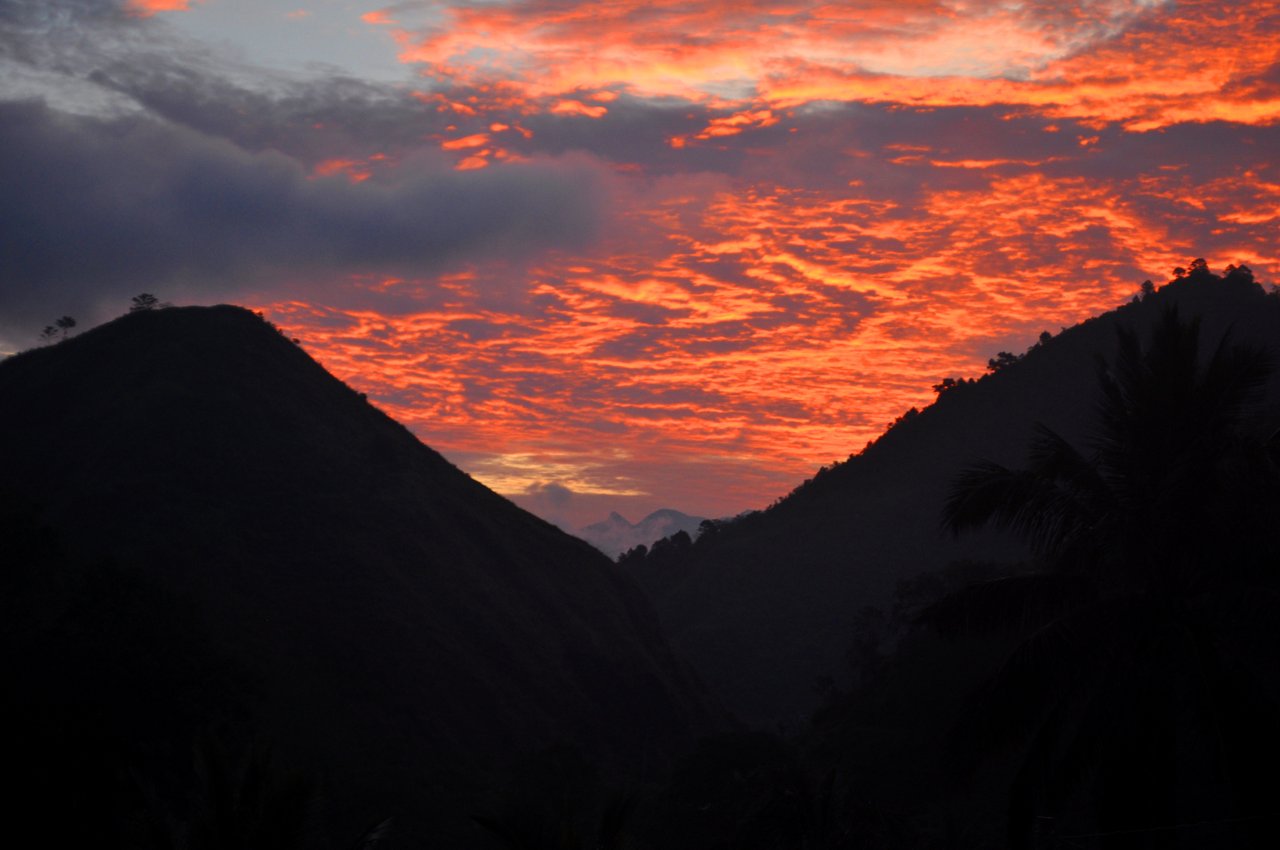
Far beyond, my friend said that one can see a part of "Sleeping Beauty" of Kalinga, a famous mountain range that Kalinga boasts of named because of how it looks like a lady lying down.
Sadanga is a landlocked municipality bounded by Bontoc, Kalinga, Barlig and Abra. It is a mountainous area. We traveled from Baguio City to Sadanga, passing by Bontoc.
It was all dark when we arrived and raining. We were warmly welcomed and fed. We were then housed at my friend's future home.
As if the sunrise is not enough, once the sun is up, we were greeted by this.
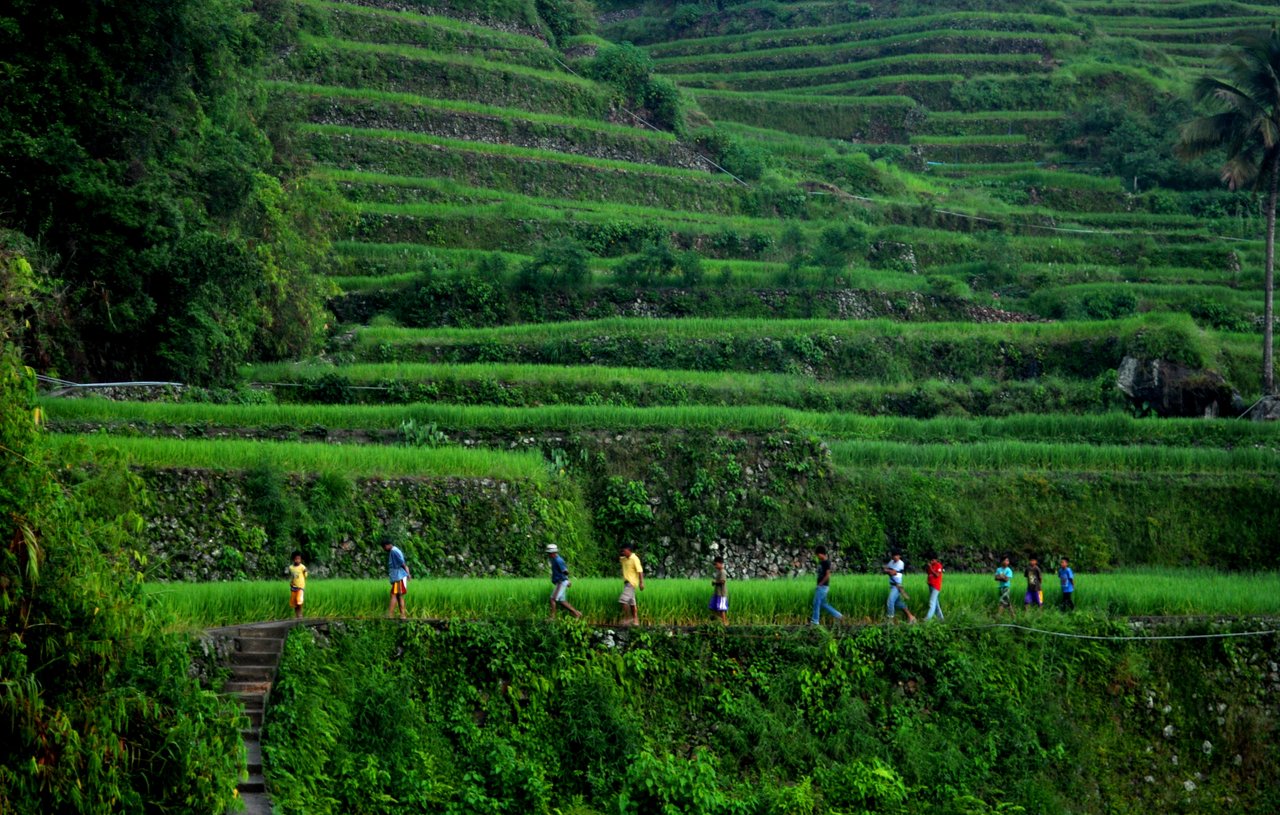
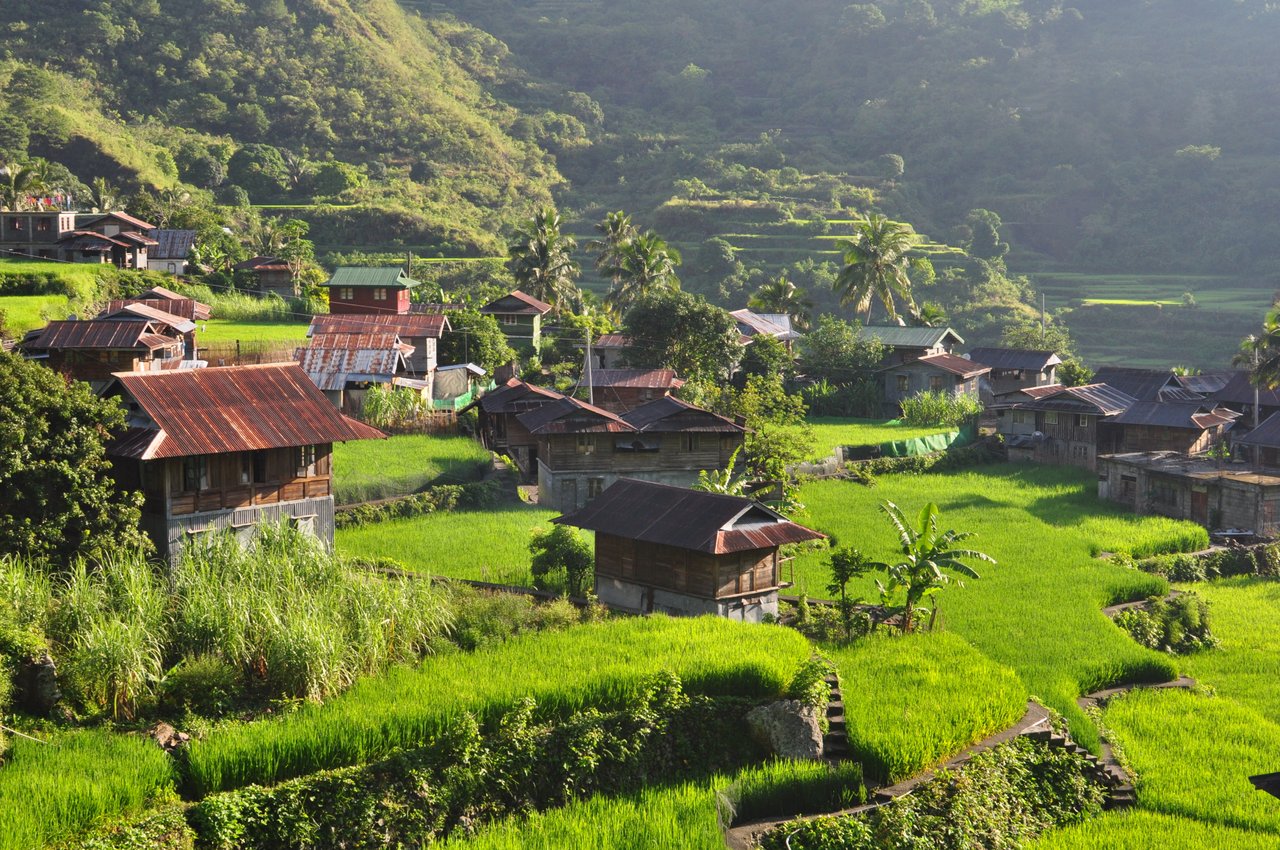
We were right in the middle of rice terraces. I was thrilled! We were there at the opportune time because rice were already planted. The light of the sun makes them burst with color and energy. The contrast of the traditional style of architecture adds beauty to this place.
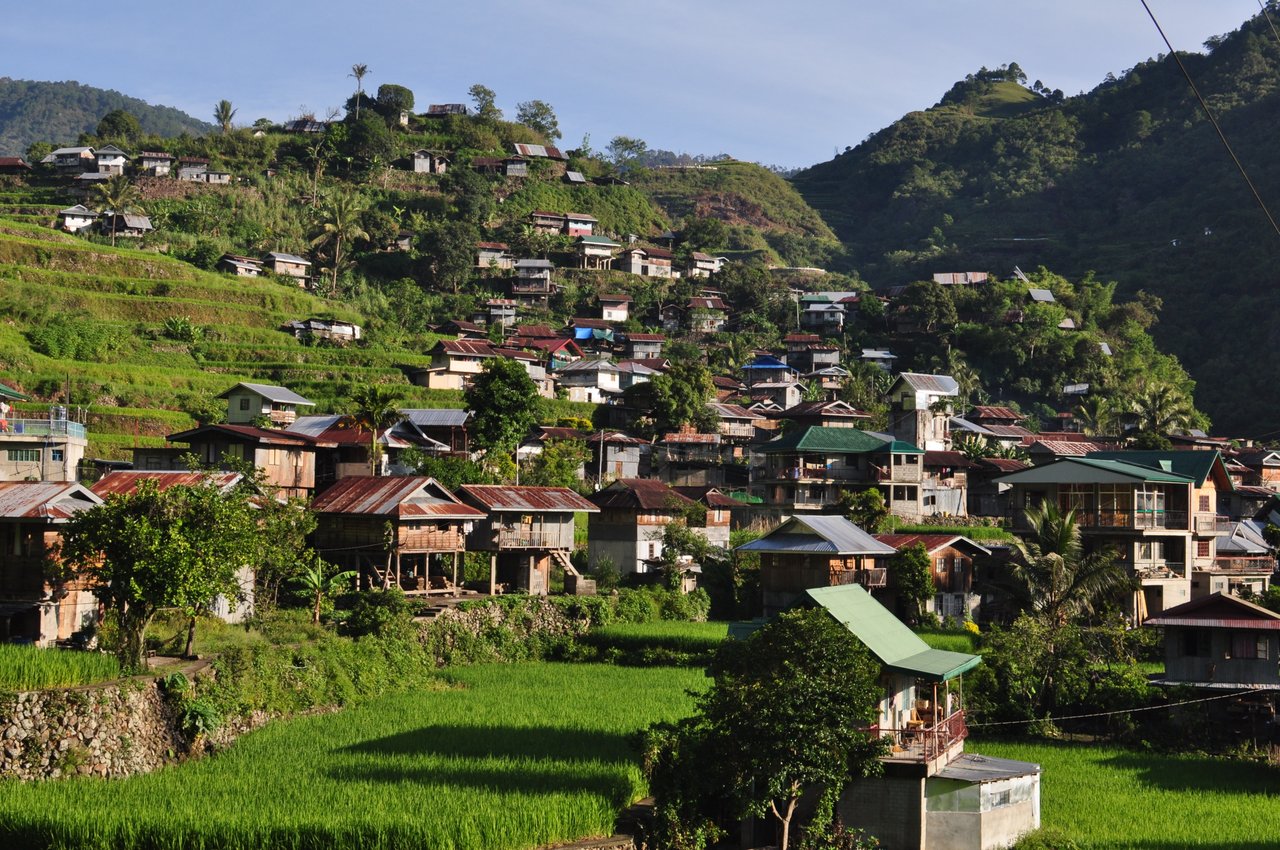
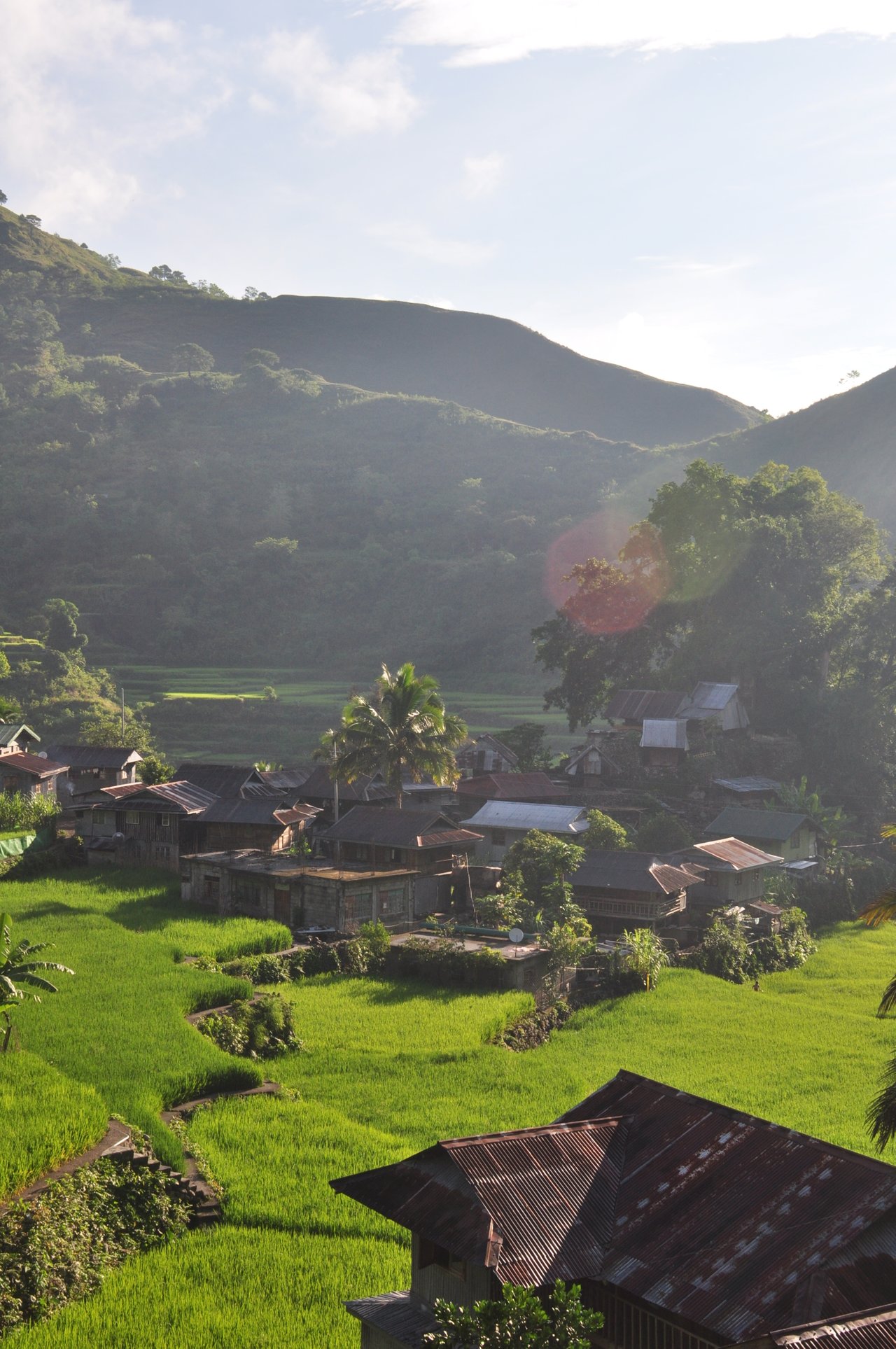
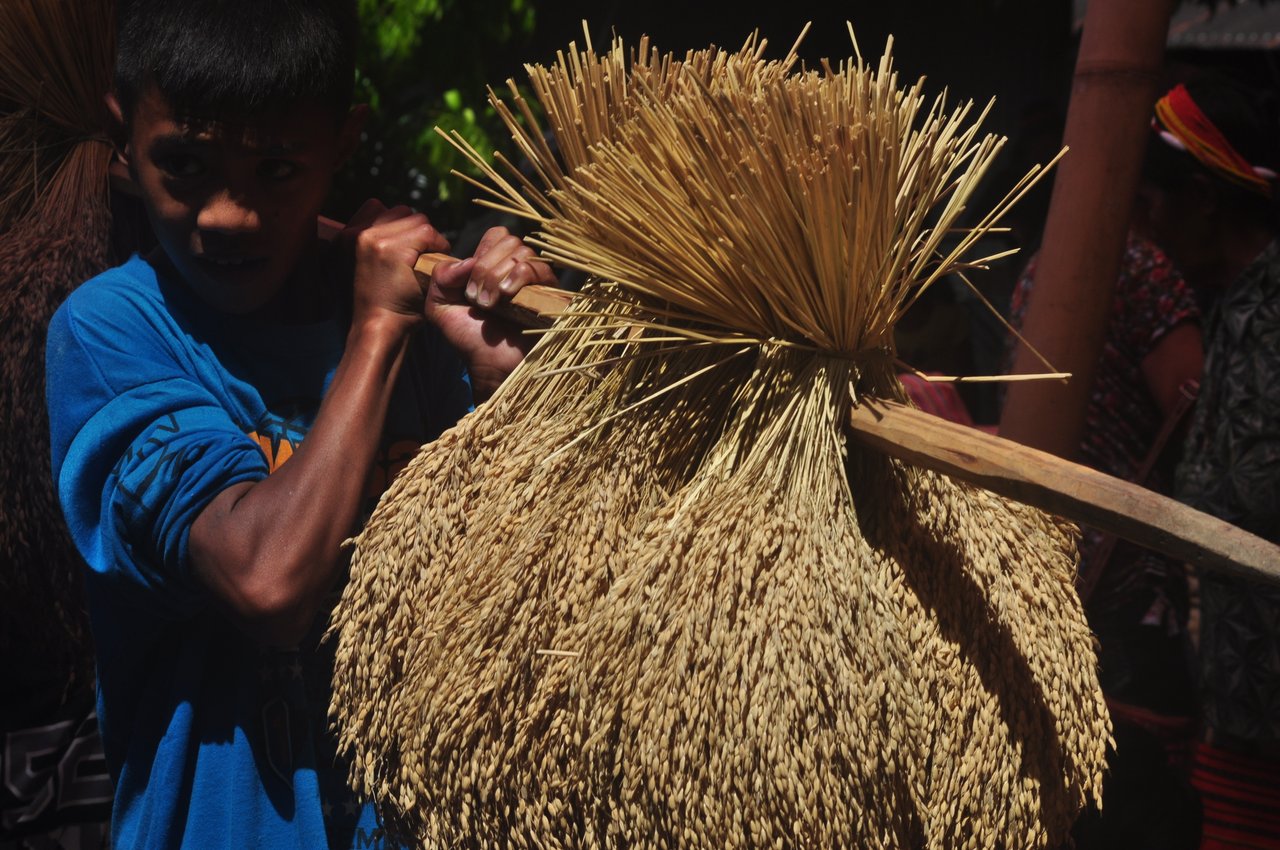
The houses are now being slowly upgraded to concrete. I can only imagine how it would be if the houses were made of indigenous materials such as cogon. It is common in the Cordillera that the houses are raised from the ground. The ground is used for storage and/or shelter animals. You can still see houses like this. What is also remarkable is that they seem to follow a certain style as noticeable in the way the roofs were built.
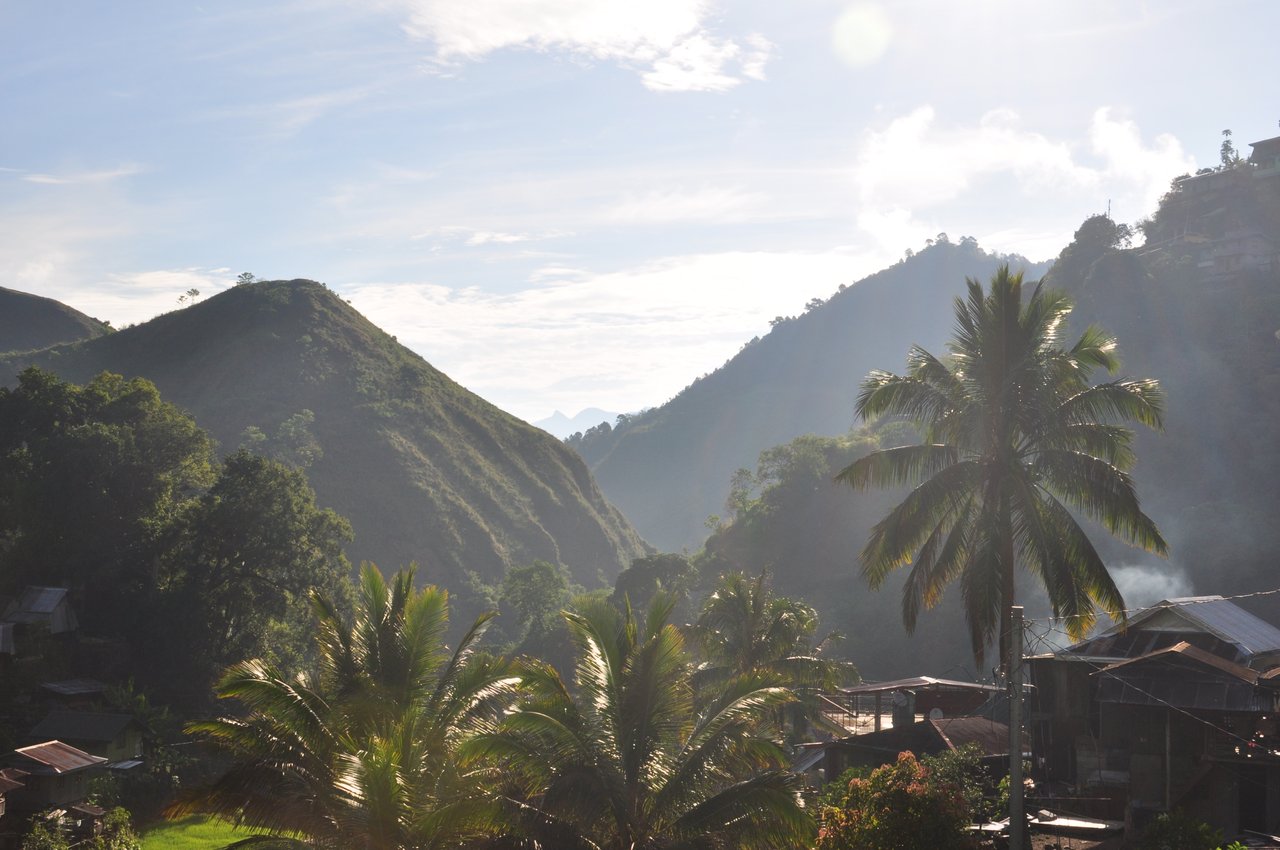
Breakfast is then served while enjoying the view outside.
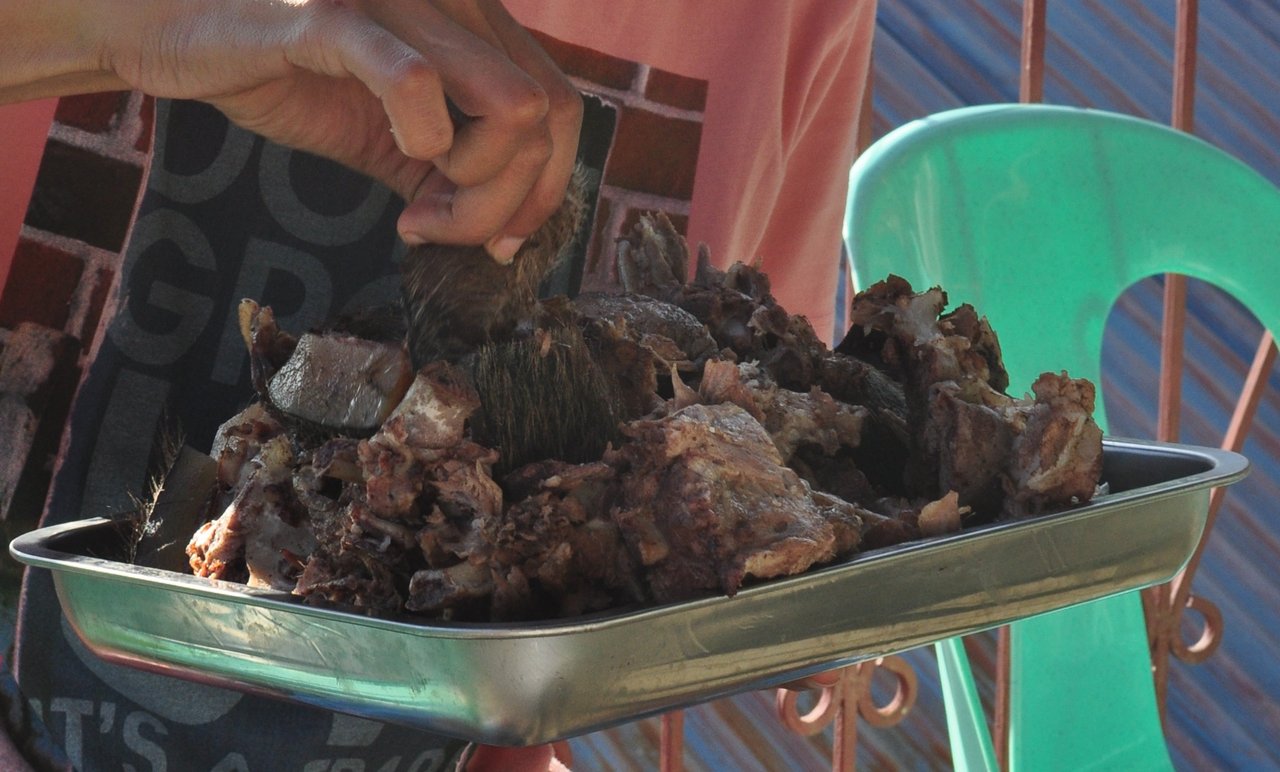
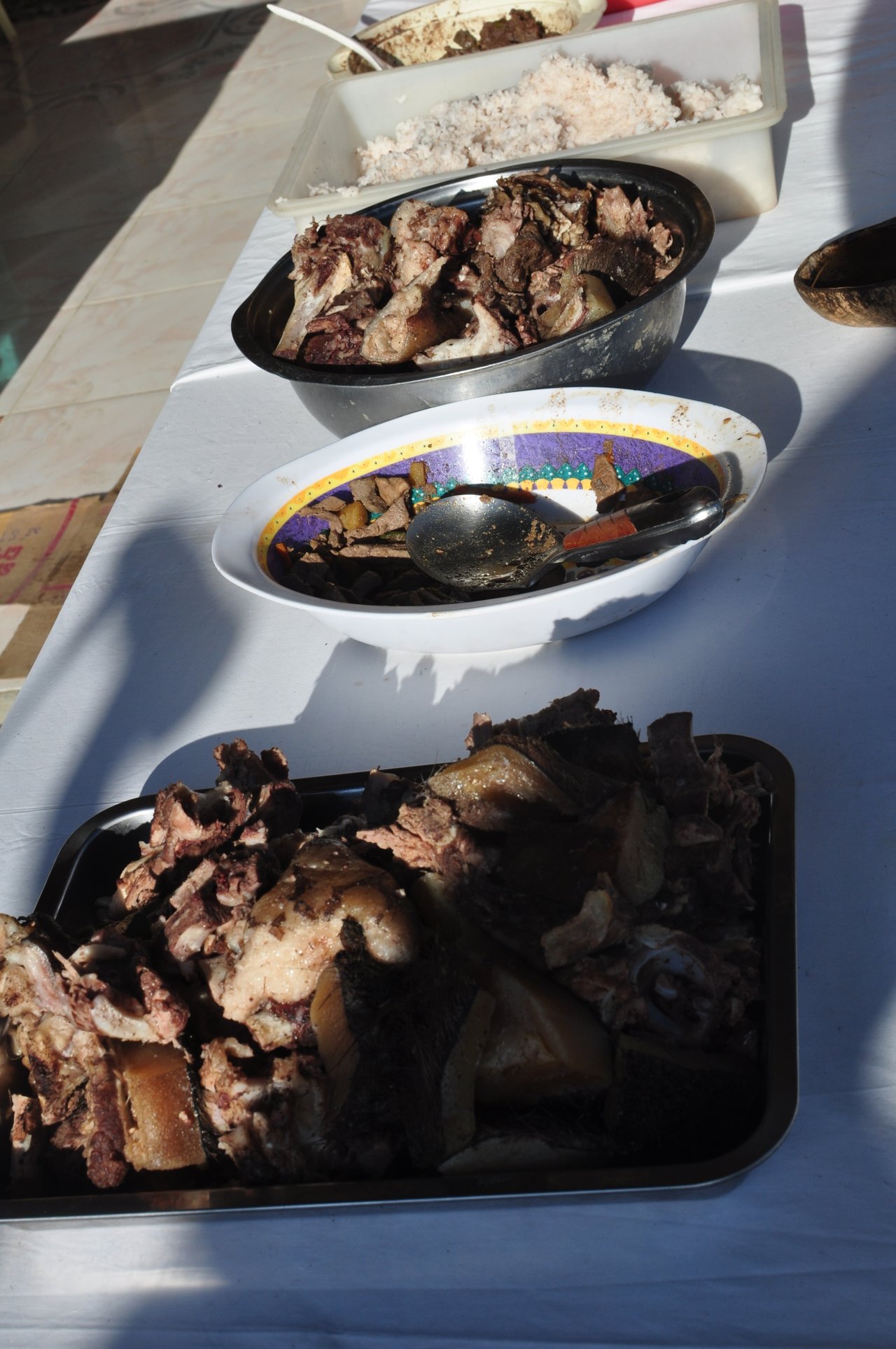
This is how food is served. They are chopped and boiled. In one house that we went, the cuts were bigger. During our stay there, we ate meals in different houses. One family will host different meal.
After our breakfast, we prepared and then headed to the wedding venue.
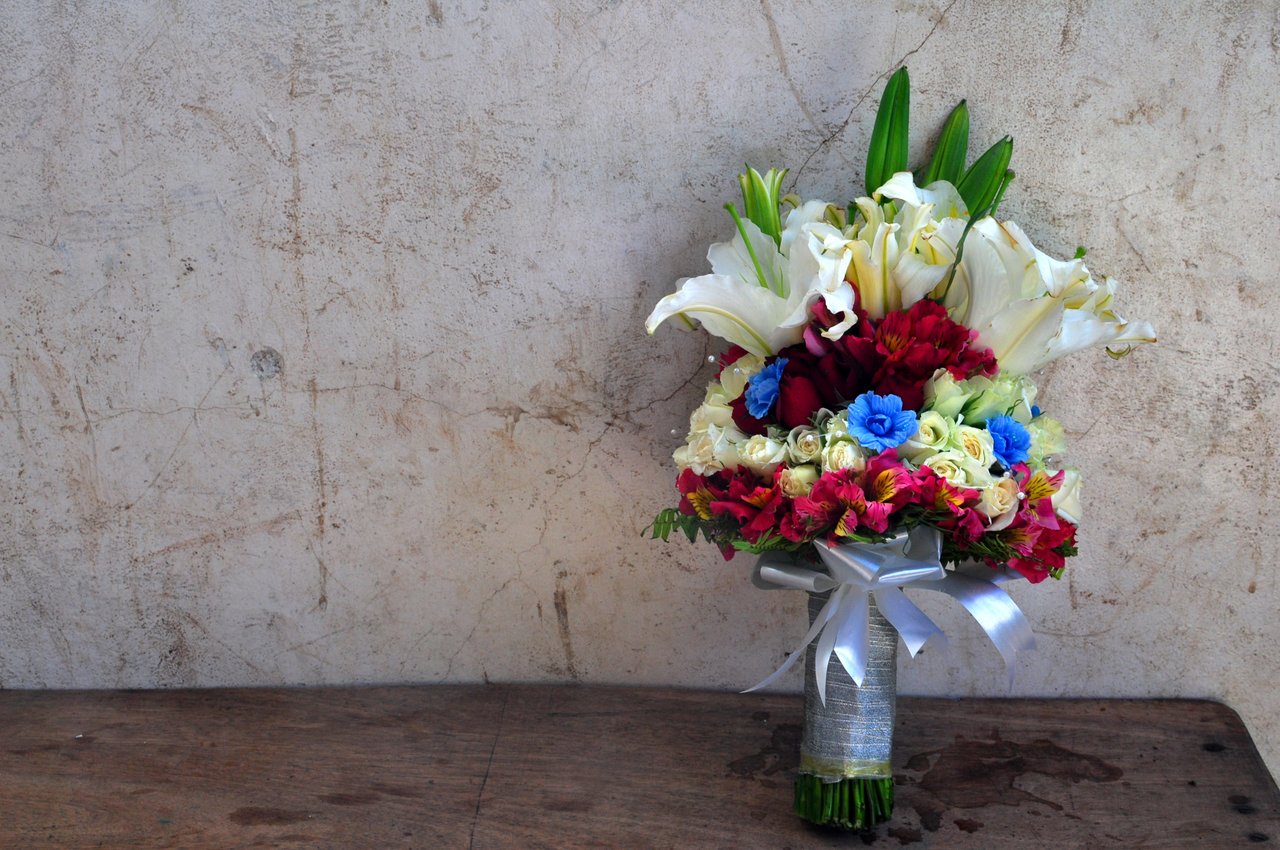
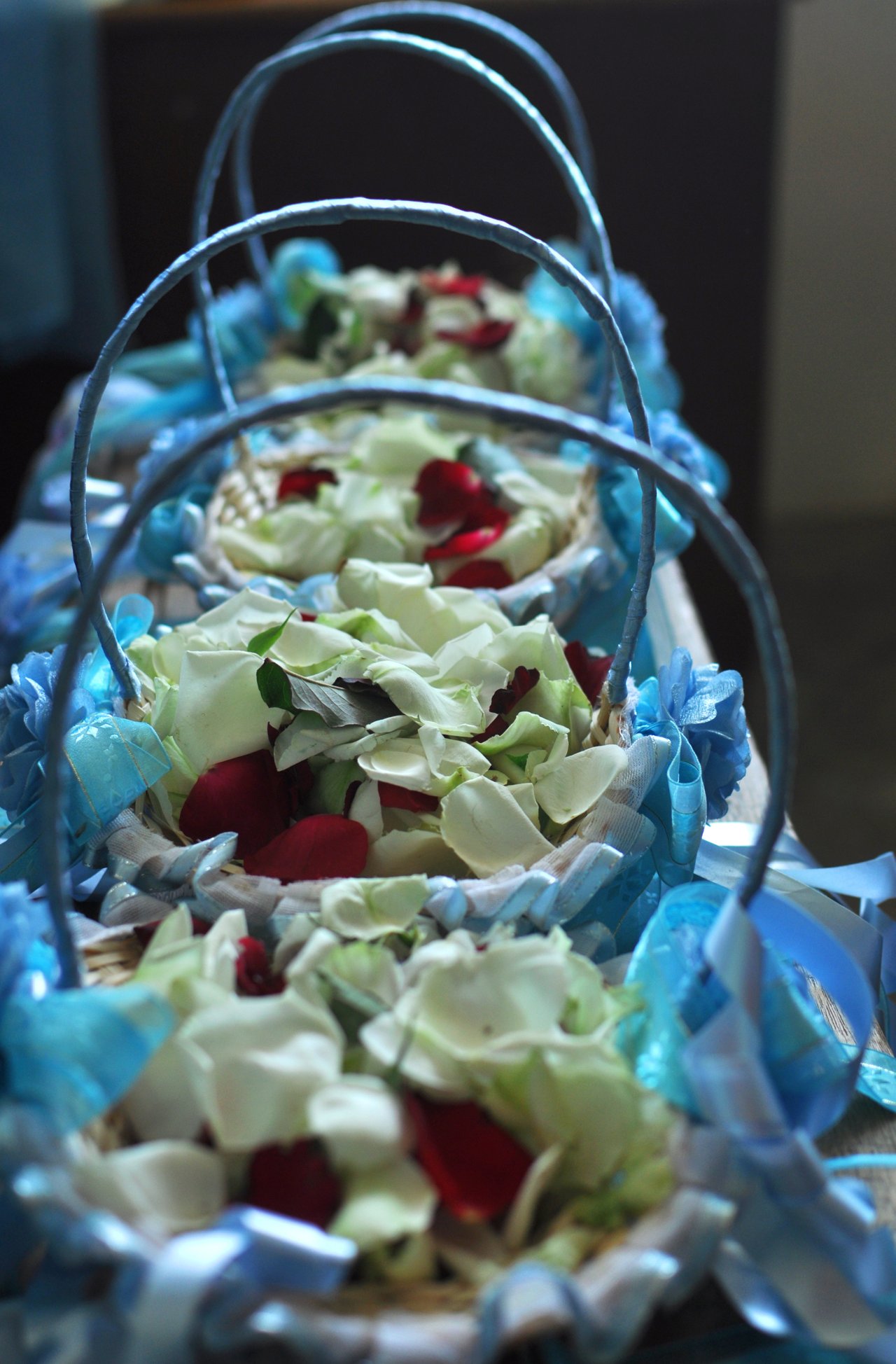
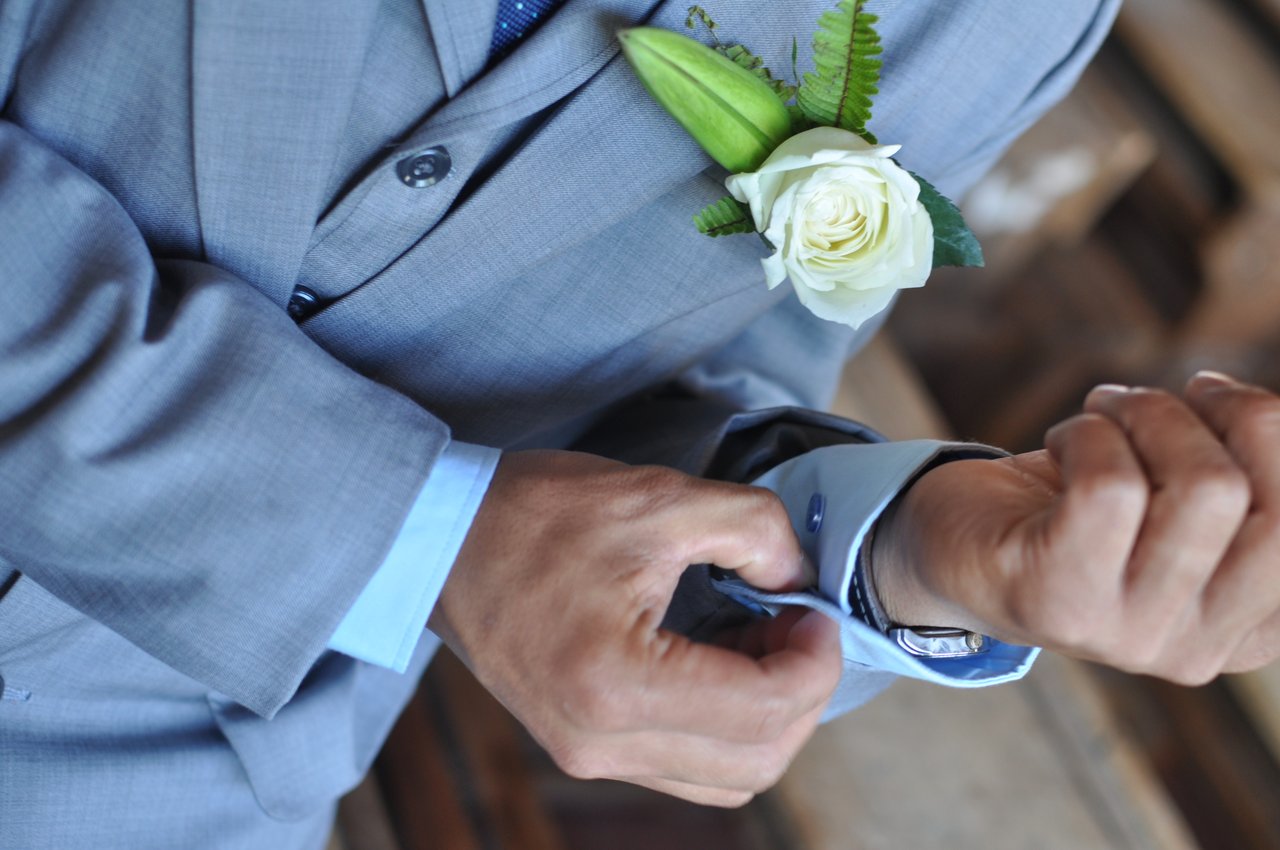
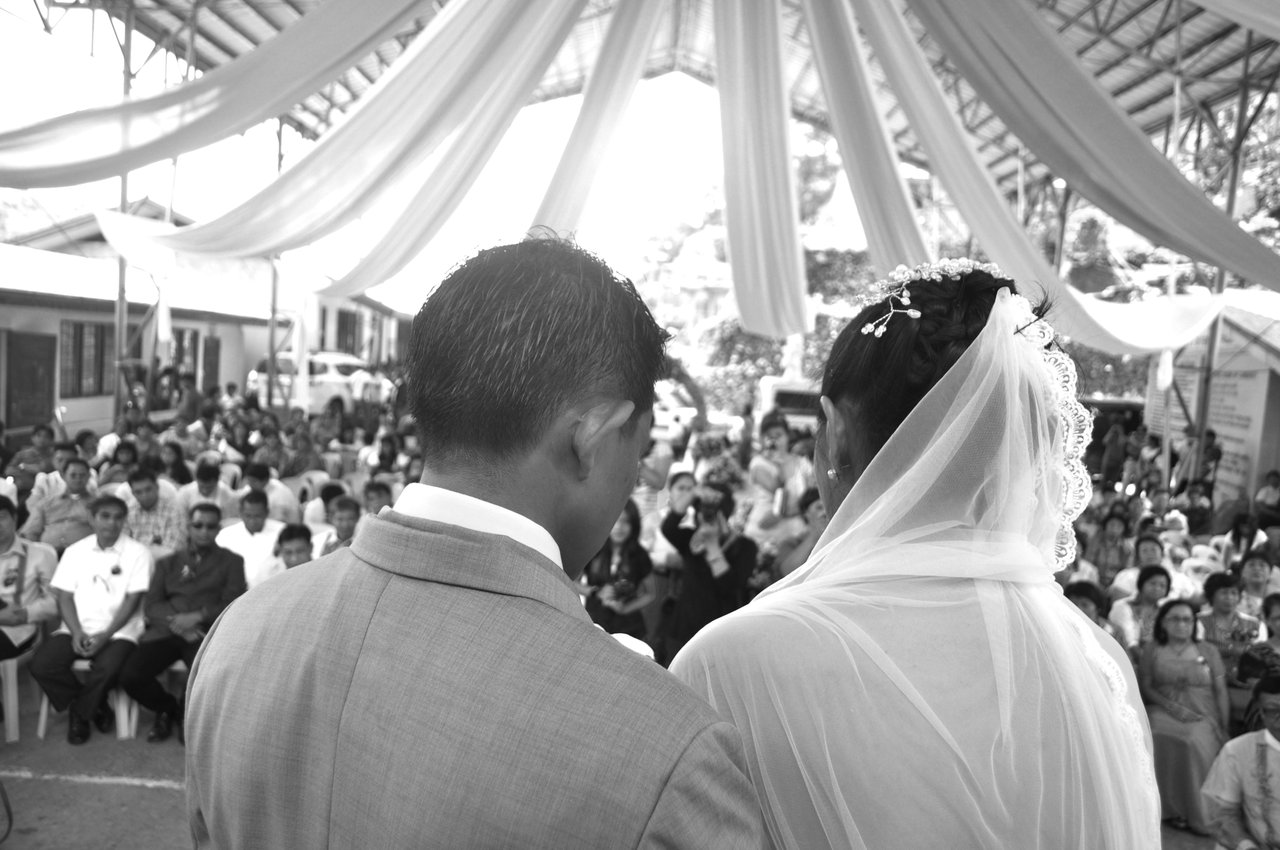
After the ceremony, the other fun part awaits and I believe it is what everyone is looking forward to - food and cañao.
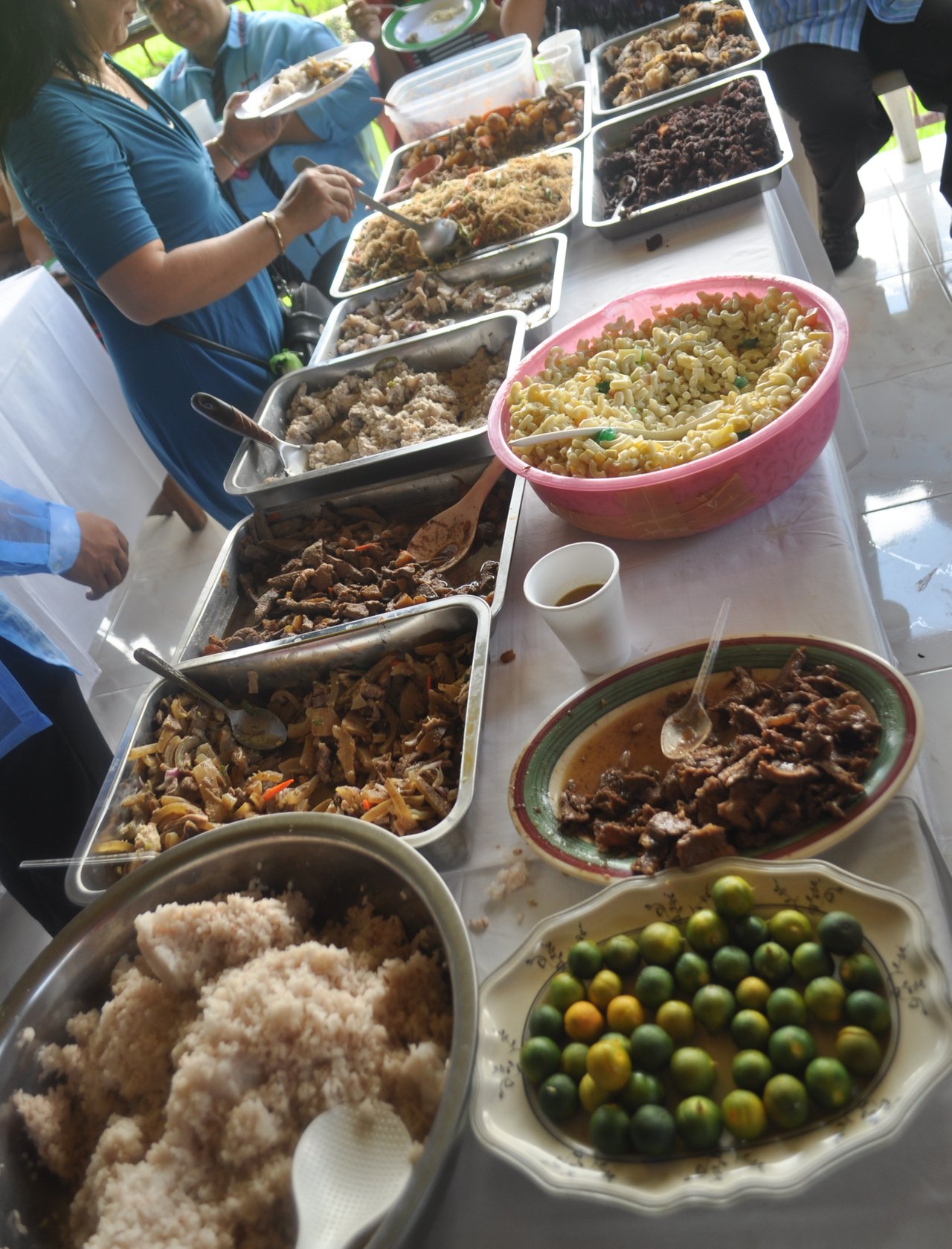
Events like this, the whole town is invited. In a community where majority of people knows each other, getting married is a serious matter especially financially. You have to be prepared to feed hundreds of people. The night before the wedding, it is hard to sleep because you can hear pigs being butchered and at the same time folks taking part in the cañao which happen all night long until the next morning. Days before the wedding, during the wedding and even after the wedding, people still dance.
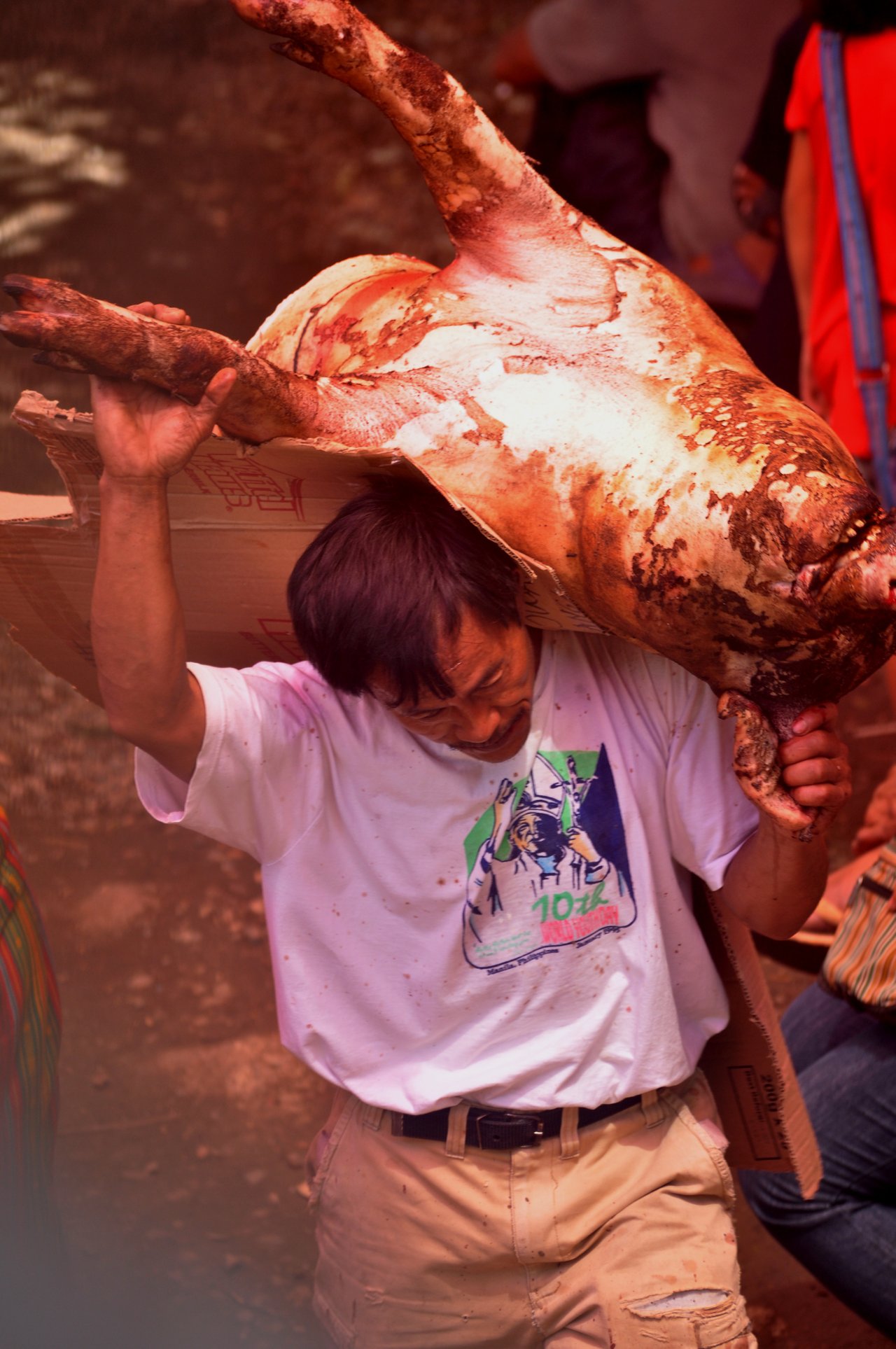
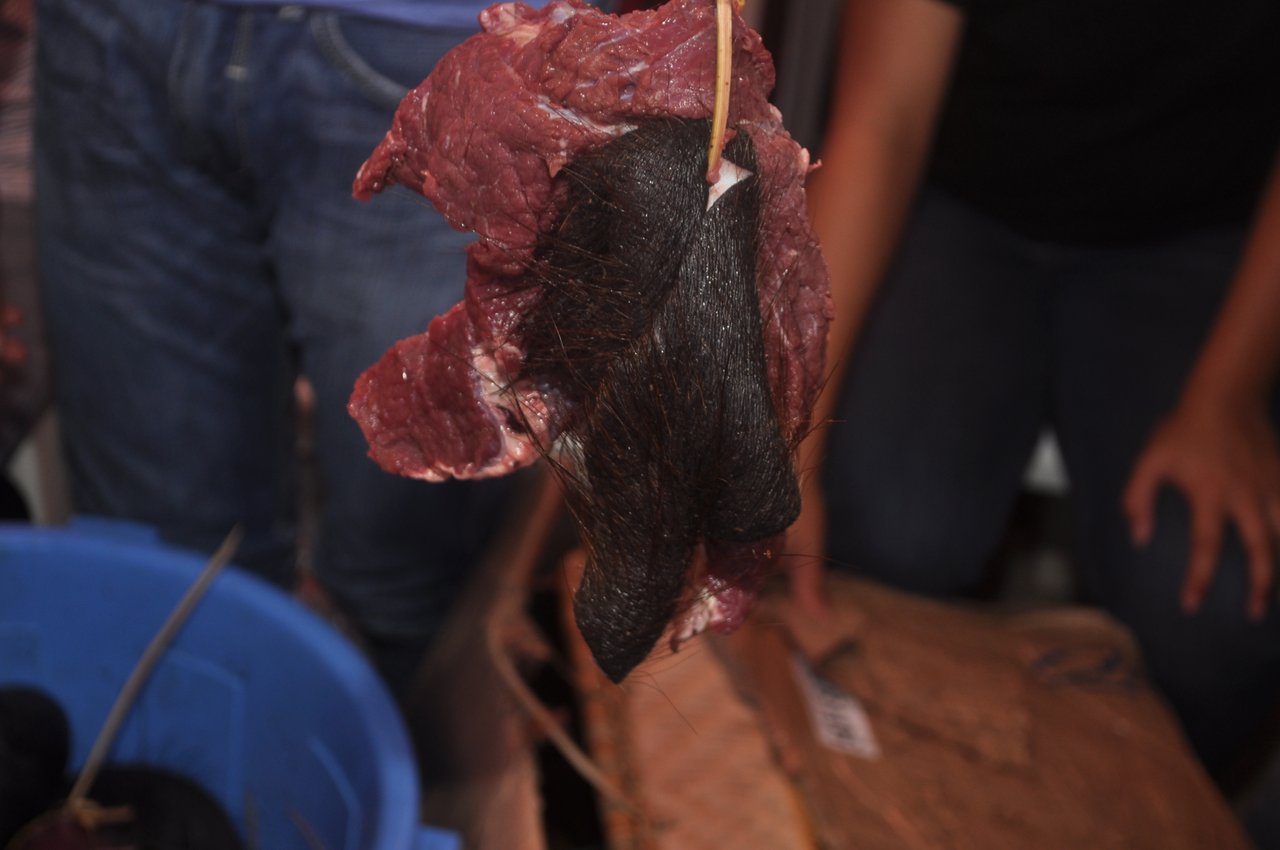
Some of the pigs were butchered and roasted to be served. Some were butchered and sliced to be given away to guests.
Tokens were given to guests as well. These wooden bowls with stand were just one of the many tokens given away. The newly wed will entertain well wishers and to accept gifts and to give tokens in return.
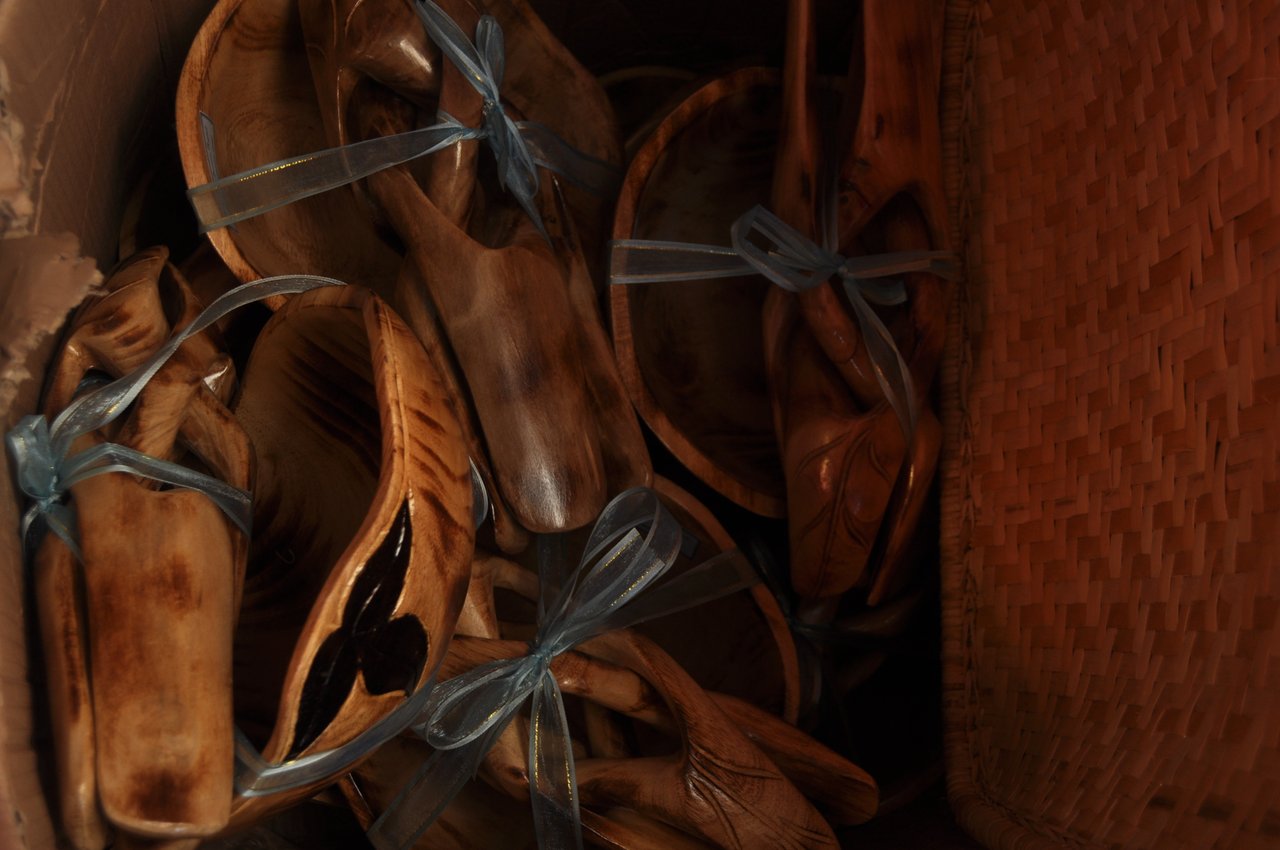
Then comes the dance.
It is in this kind of practice that shows how tradition is kept alive. Some however were no longer doing this. The introduction of Christianity changed the beliefs of many and will no longer participate in what is perceived as paganism. The next generations don't know how to do a proper cañao, just like these newlyweds, to the amusement of the guests.
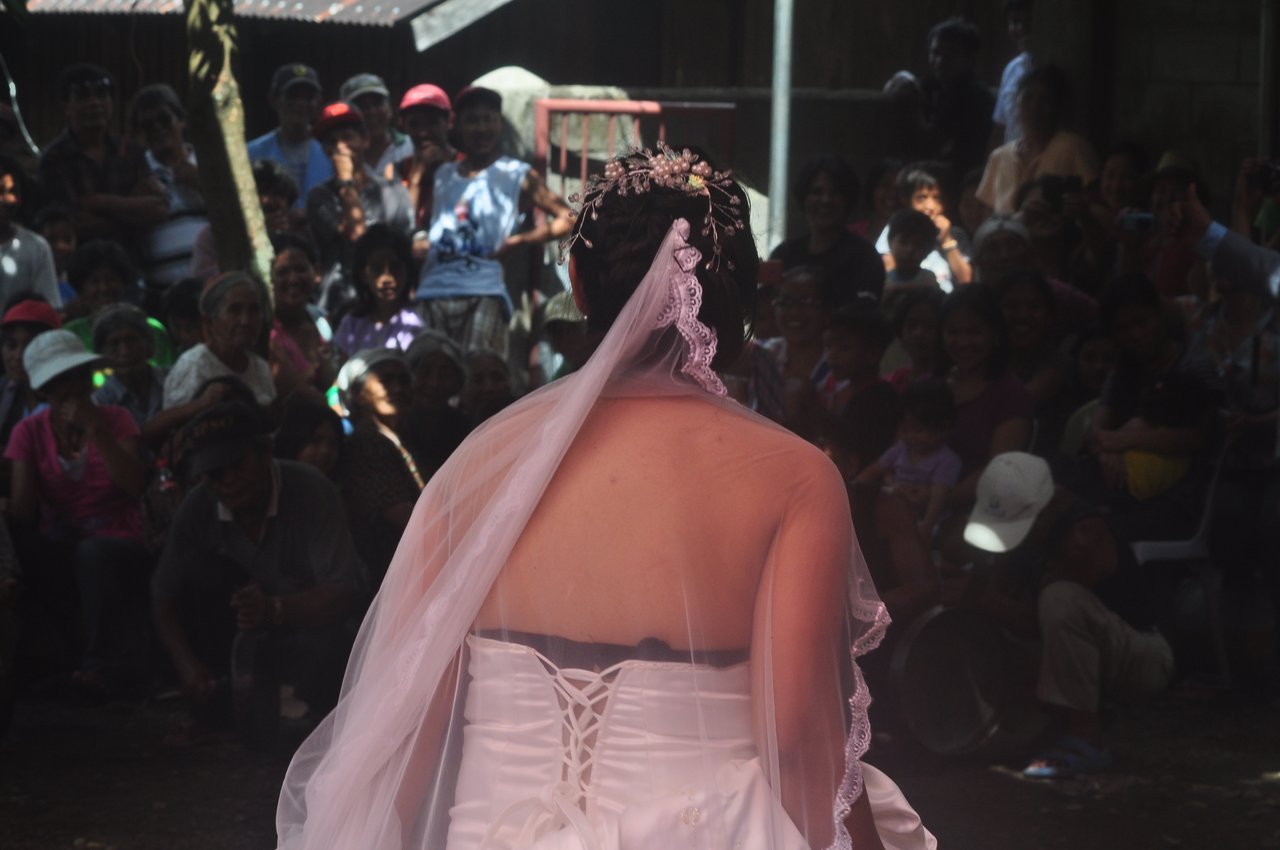
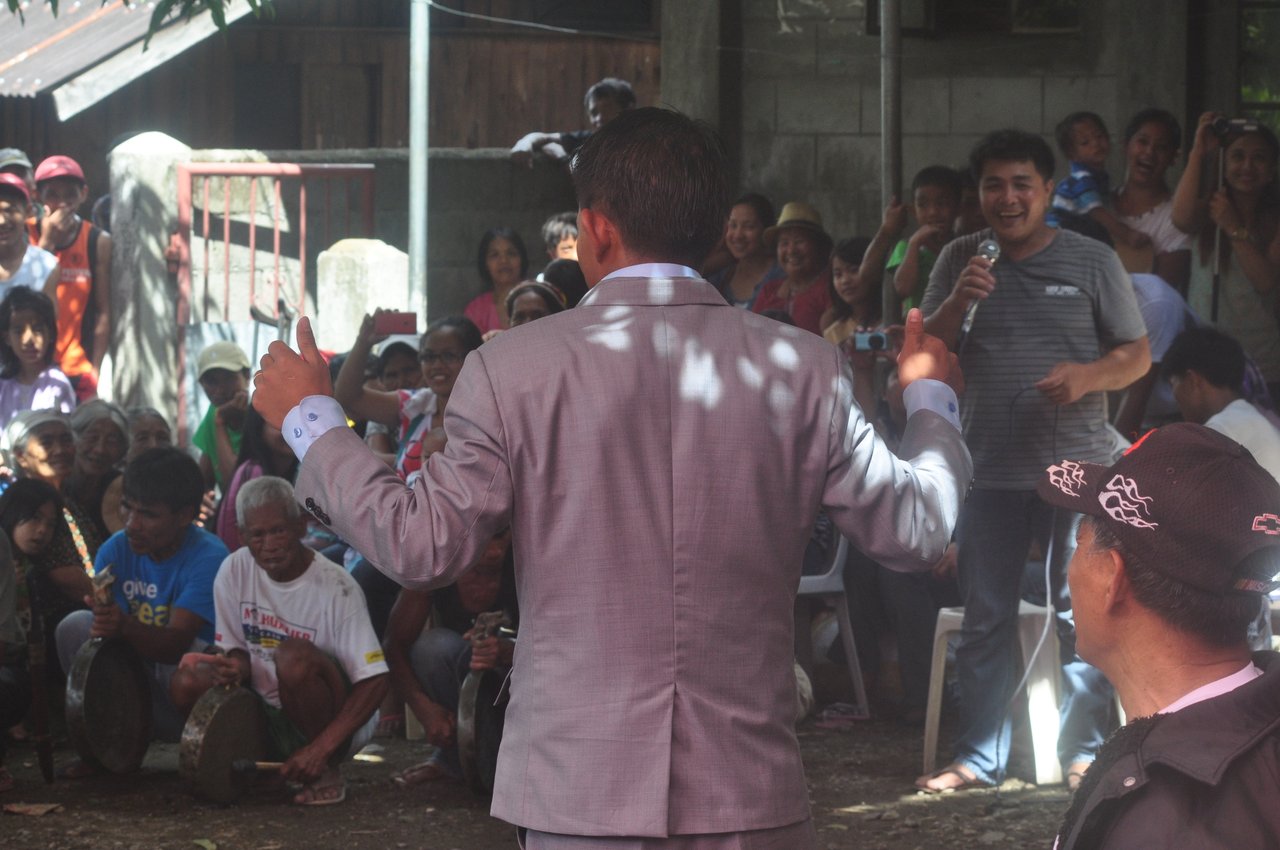
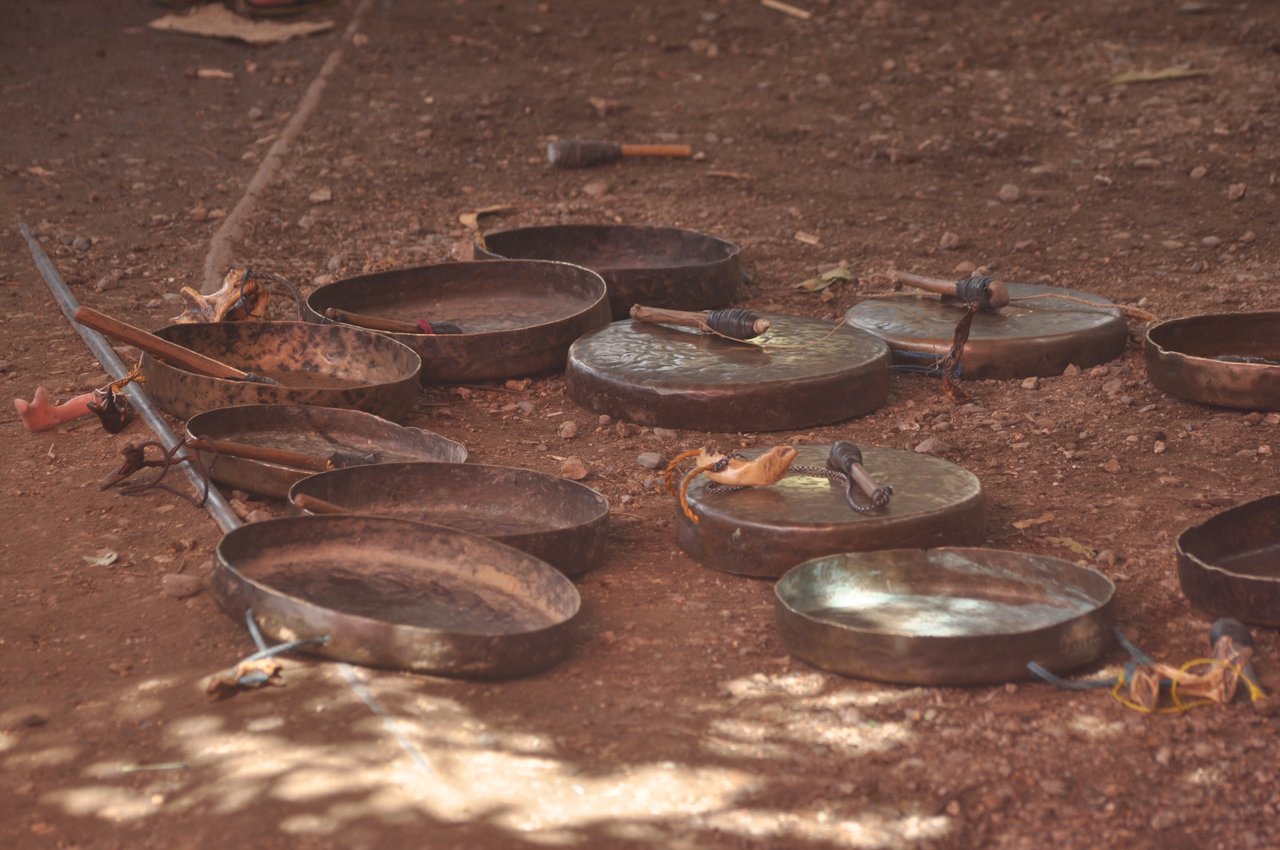
Gangsa or gongs were made of metal or bronze with jaw bones as handles and were beaten with wooden sticks. These were played by men, kids and adults, but ladies are allowed to play it too. Each gong sounds different and each gongs were beaten differently to follow a repetitive rhythm. The playing of gongs differ from region to region.
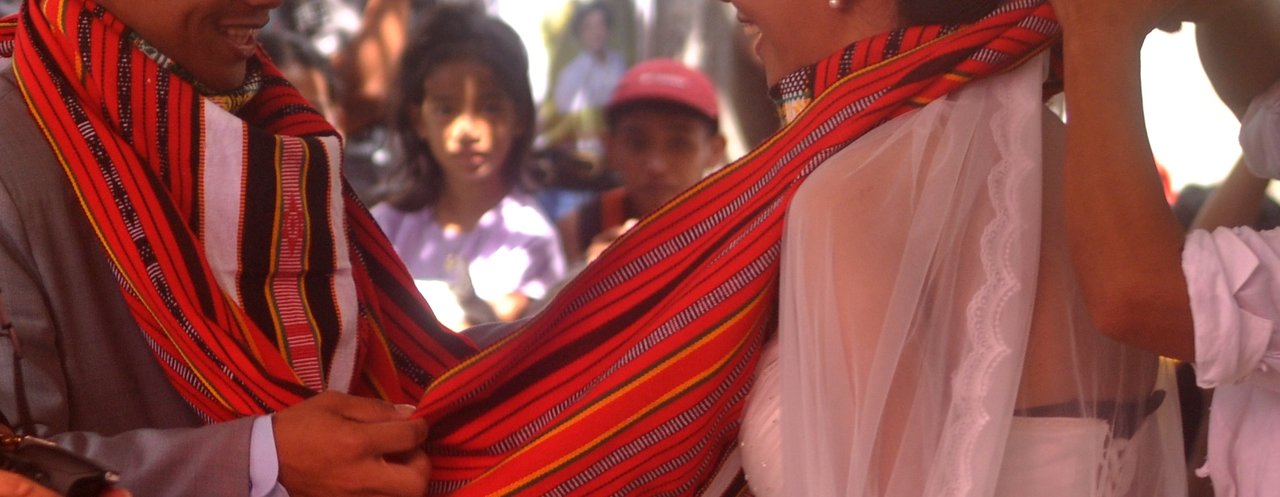
A popular practice is the tying of cloth around the newlyweds to place money. The couple will then dance and guests will place money, coins or bills, to where they prefer. The groom or the bride will then fetch that money using his/her mouth and drop it to the cloth. In this occasion, tapis or the traditional wrap-around skirt was used.
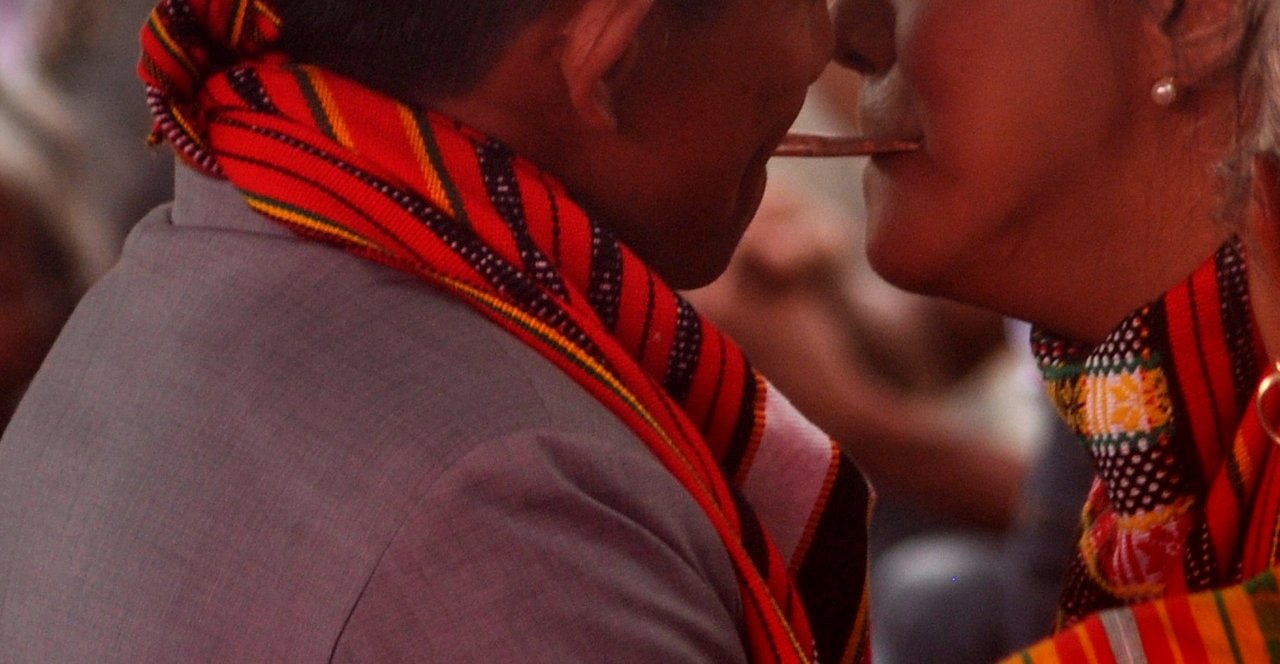
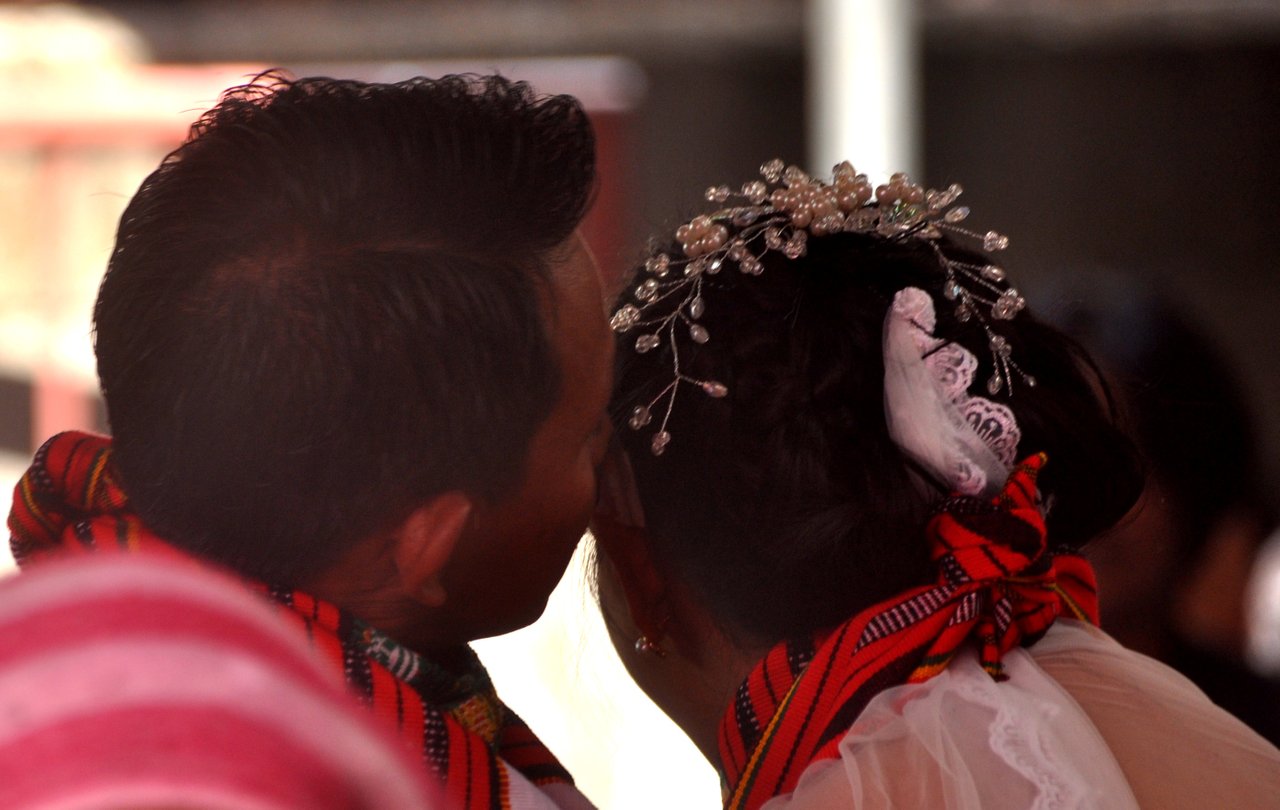
Not only will the couple dance once but every now and then they are callws to the dance floor. They are at the mercy of the crowd. In between dances are speeches from guests and singing from those who are bold and willing enough to do so.
Different groups are called to represent families, relatives and friends.
What I love watching the most are the elderly and the way they dance. There is such grace in their movement - beautiful to witness.
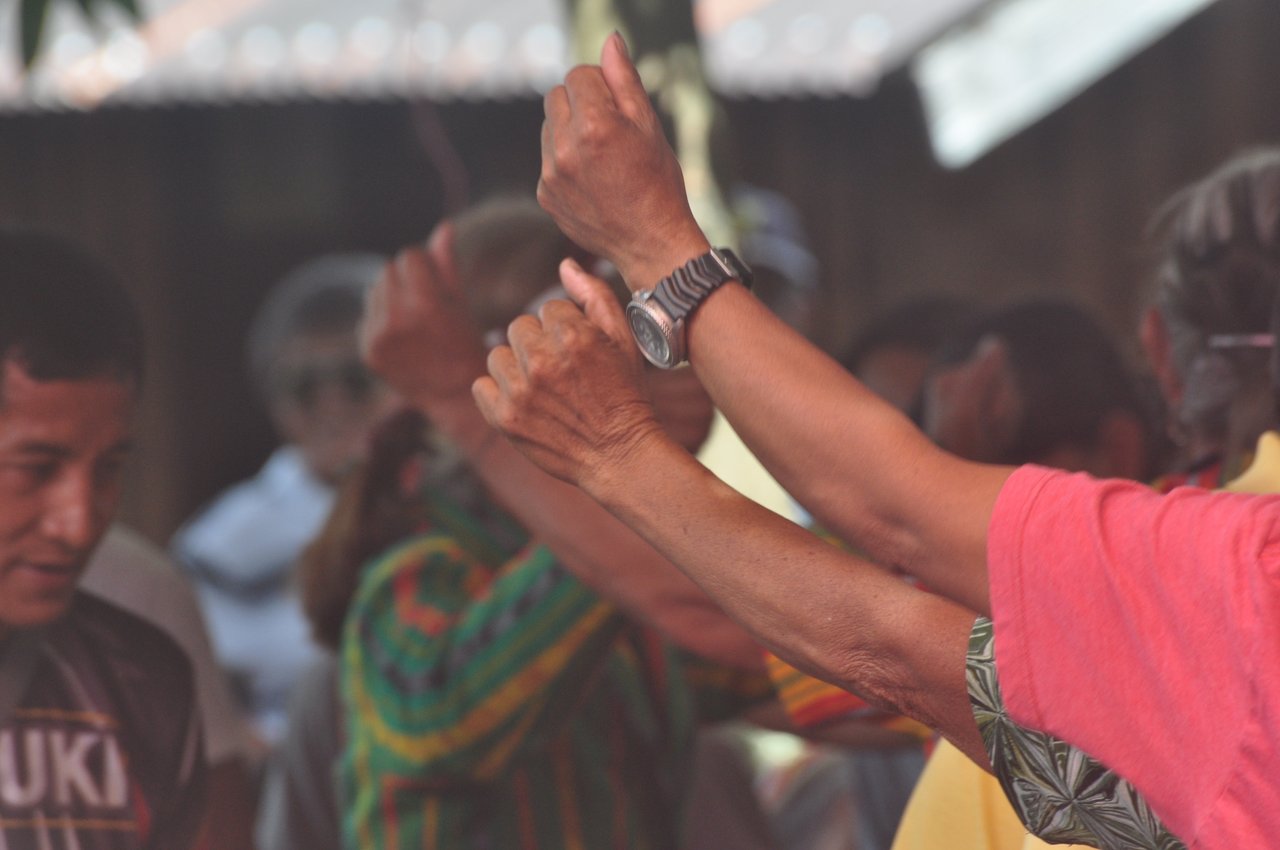
Ladies adorn themselves with colorful beads and snake skeletons.
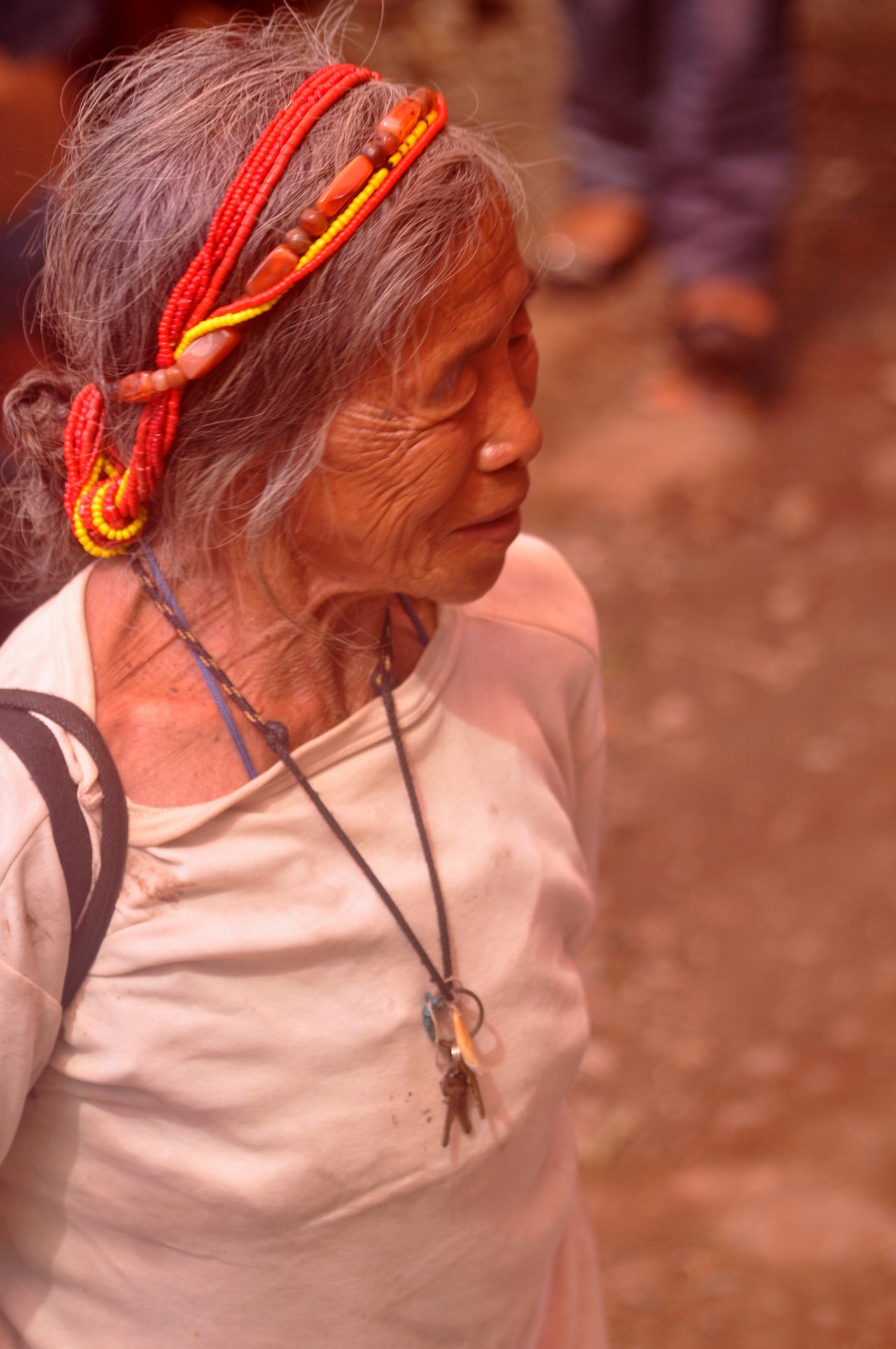
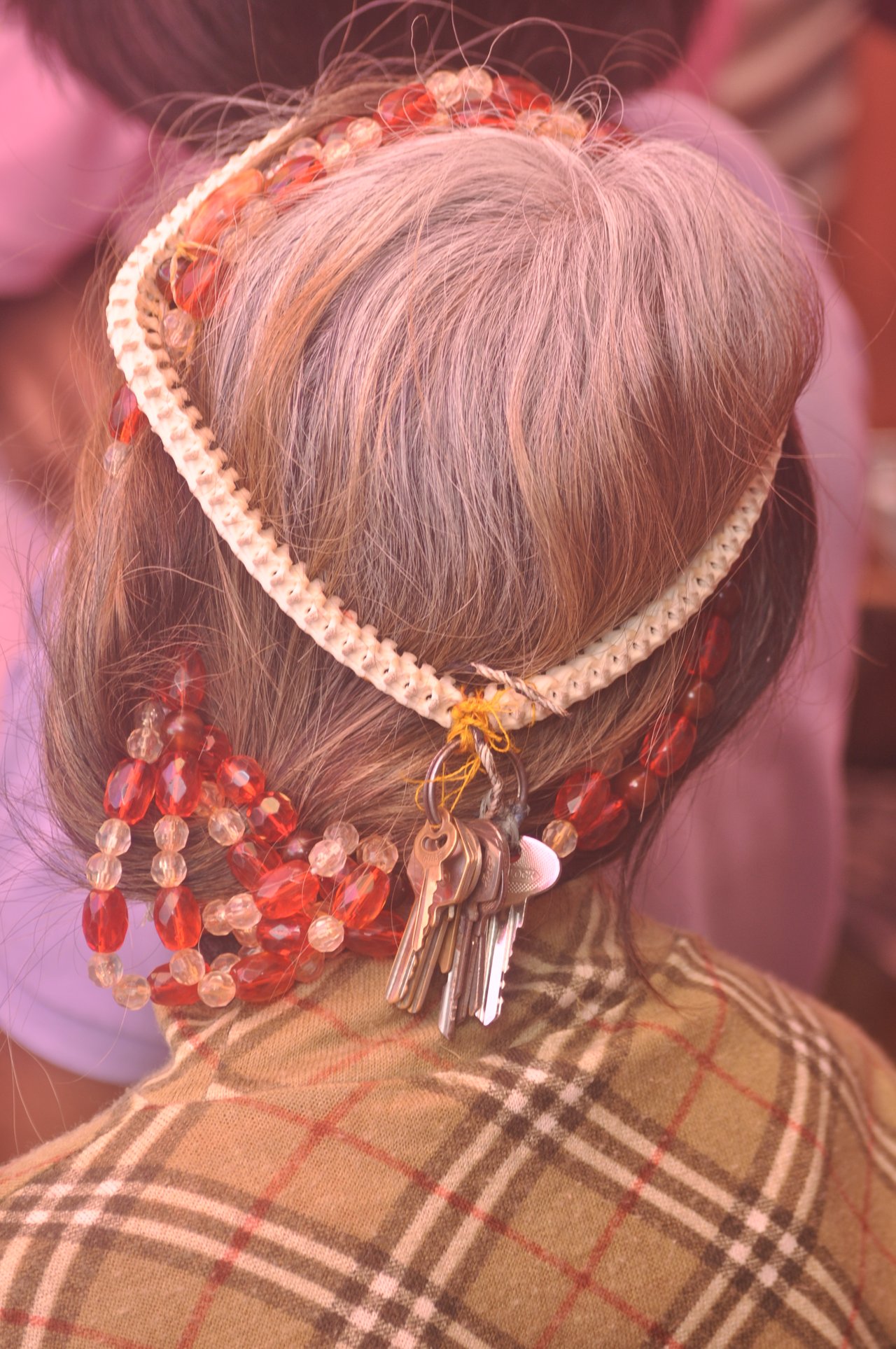
The skeleton bones are said to be a charm against lightning. Aside from being used as a hairpiece, it also serves as a keychain.
There was a lot of things going on that it's hard to keep up. Emotions are high and everybody is in good spirits. The merrymaking is infectious such that you are swayed to join the dance or to play the gong at least. Everyone is a participant and a spectator at the same time. It is in these moments you are lucky to be alive to witness a culture and tradition that survived for so many years. In this modern times, traditions are still what bond us together.
This is just a snippet of what Sadanga has to offer. They have one of the beautiful rice terraces than can be seen along the way. They have caves and waterfalls that takes hours to get to so they are well preserved. They even have natural hot springs and one that is a public bath with separate baths for men and women. There is so much to look forward to. One Korean missionary fell in love with this place and now lives here. The people, culture and environment are easily lovable.
View this post on TravelFeed for the best experience.
